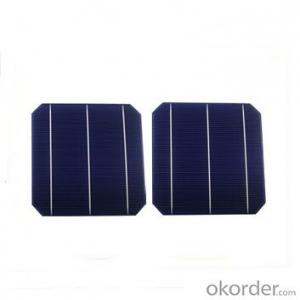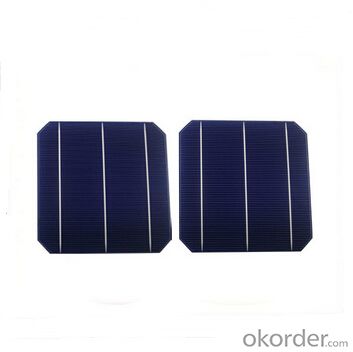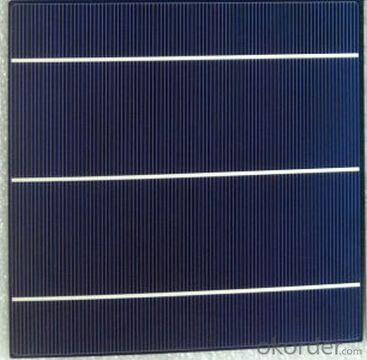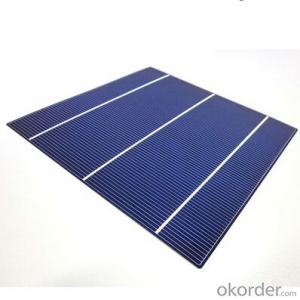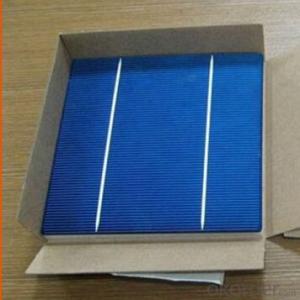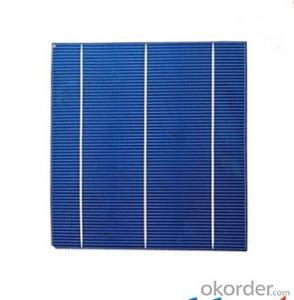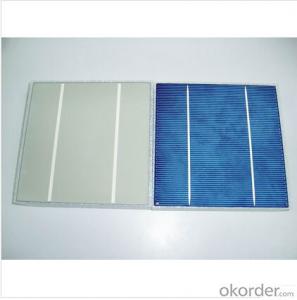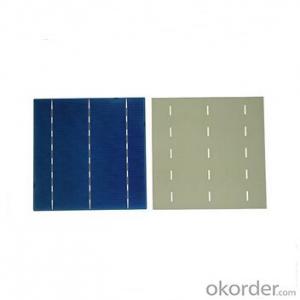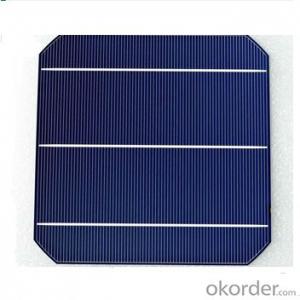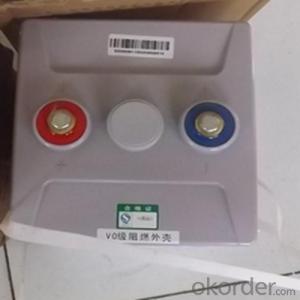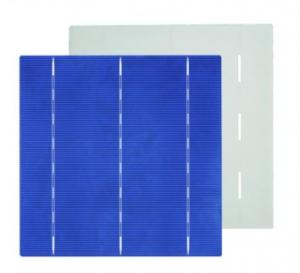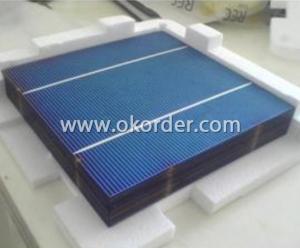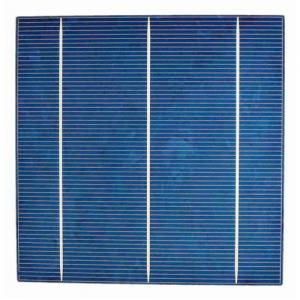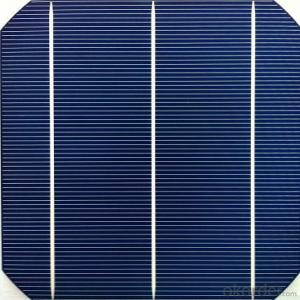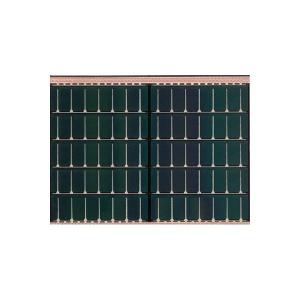Buy Loose Polycrystalline Solar Cells - High Quality 17.80%-17.99% Efficiency
- Loading Port:
- Shanghai
- Payment Terms:
- TT OR LC
- Min Order Qty:
- 1000 pc
- Supply Capability:
- 1000000 pc/month
OKorder Service Pledge
OKorder Financial Service
You Might Also Like
Solar Cells:
solar cells, when struck by photons of light from the sun, generates an electrical current which can then be used to power DC or AC electrical loads.
A solar cell is made of silicon. Computer chips are made of this same material. Basically, when light strikes the surface of a solar cell some of it is absorbed into the silicon. This light energy bumps the electrons loose and causes energy to flow
Solar cells is made by solar wafer, it has three categories of solar cell right now, monocrystalline polycrystalline and thin film,These cells are entirely based around the concept of PN junction, which is the critical part of solar module, it is the part that can convert the light energy into electricity, the thickness is from 180um to 200um, with even busbars to conduct electricity, textured cell can decrease diffuse reflection; they are often electrically connected and encapsulated as a module. Photovoltaic modules often have a sheet of glass on the front (sun up) side, allowing light to pass while protecting semiconductor wafers from abrasion and impact due to wind-driven debris, rain, hail, etc. Solar cells are also usually connected in series in modules, creating an additive voltage. Connecting cells in parallel will yield a higher current;With high quality and stable quality. Our Cells can greatly improve the performance of Solar Modules.
Specifications
Model | Efficiency | Power | Max Power Current | Min Power Current | Max Power Voltage | Short Circuit Current | Open Circuit Voltage |
Eff(%) | Ppm(W) | Ipm(A) | Ipm(A) | Vpm(V) | Isc(A) | Voc(V) | |
GS-156P | 17.80-17.99 | 3.89 | 7.50 | 7.38 | 0.527 | 8.04 | 0.630 |
GS-156P | 17.60-17.79 | 3.84 | 7.45 | 7.32 | 0.525 | 7.94 | 0.628 |
GS-156P | 17.40-17.59 | 3.80 | 7.40 | 7.25 | 0.523 | 7.90 | 0.629 |
GS-156P | 17.20-17.39 | 3.76 | 7.35 | 7.17 | 0.518 | 7.86 | 0.628 |
GS-156P | 17.00-17.19 | 3.71 | 7.3 | 7.10 | 0.516 | 7.80 | 0.625 |
Solar Cells Advantage:
• High efficiency and stable performance in photovoltaic conversion.
• Advanced diffusion technique ensuring the homogeneity of energy conversion efficiency of the cell.
• Advanced PECVD film forming, providing a dark blue silicon nitride anti-reflection film of homogenous color and attractive appearance.
• High quality metal paste for back surface and electrode, ensuring good conductivity, high pulling strength and ease of soldering.
• High precision patterning using screen printing, ensuring accurate busbar location for ease with automatic soldering a laser cutting.
Features:
High efficiencies up to 16.4%
Proven long term mechanical stability of silicone
Make of highly purified poly silicone
Three bus bars for reduced series resistance and improved module and cell efficiency
Blue anti-reflecting coating ensures improved light absorption and increased efficiency
Acid texturization offers a uniform appearance and virtually invisible crystal structure
Excellent low light behavior for improved energy yield
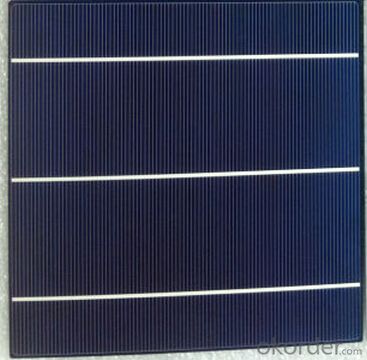
FAQ
We have organized several common questions for our clients,may help you sincerely:
①What price for each watt?
It depends on the efficiency of the solar cell, quantity, delivery date and payment terms.
②How long can we receive the product after purchase?
In the purchase of product within three working days, We will arrange the factory delivery as soon as possible. The pecific time of receiving is related to the state and position of customers.Commonly 7 to 10 working days can be served.
③Can you provide the peripheral products of the solar panels, such as the battery, controller, and inverter? If so, can you tell me how do they match each other?
Yes, we can, we have two companies for solar region, one is CNBM International, the other is CNBM engineering Co.
We can provide you not only the solar module but also the off grid solar system, we can also provide you service with on grid plant.
④What is your warranty of solar cell?
Our product can promise lower than 0.3% open box crack, we support claim after opening the box if it has crackm color difference or sth, the buyer should give pictures immediately, we can not accept the claim after the solar cell has assembled to solar panel.
• Timeliness of delivery
• ⑤How do you pack your products?
We have rich experience on how to pack the solar cell to make sure the safety on shipment, we could use wooden box or pallet as buyer's preference.
- Q: How can I explain to my 10 year old daughter what solar cells are?
- I had the same question from my son when he was 11 years old. All I did was I took him to the National Electricity museum, and it explains everything about solar cells.
- Q: How do solar cells generate electricity?
- Solar cells generate electricity through the photovoltaic effect, where the cells convert sunlight directly into electrical energy. The cells are made of semiconducting materials, usually silicon, which absorb photons from the sunlight. These photons excite the electrons in the material, causing them to break free from their atoms and create an electric current. This current is then collected and used to power various devices or stored in batteries for later use.
- Q: Can solar cells be used for outdoor lighting?
- Yes, solar cells can be used for outdoor lighting. Solar-powered lights utilize solar cells to convert sunlight into electricity which is stored in batteries during the day. This stored energy is then used to power the lights during the night, making them a sustainable and environmentally-friendly option for outdoor lighting.
- Q: How do solar cells perform in areas with high levels of salt spray?
- Solar cells generally perform well in areas with high levels of salt spray. The materials used in solar cells are designed to be resistant to corrosion and degradation caused by salt exposure. However, regular cleaning and maintenance may be required to ensure optimal performance and prevent any potential buildup of salt deposits on the surface of the solar panels.
- Q: Where can I help my company to buy the 3 Busbar Solar Cell for our project?
- I am not quite sure about the 3 Busbar solar cell you are talking about, but we do have this product, the Grade A N Type 4.47W 5x5 Monocrystalline Silicon Solar Cell for your reference, I can send you the details later if you want to know more.
- Q: How much does a solar cell cost?
- It's not easy to answer the question in a simple way, but an example is the residential solar systems are typically sized from 3 to 8kW and end up costing between $15,000 and $40,000.
- Q: What are the main components of a solar cell?
- The main components of a solar cell are the semiconductor material, typically made of silicon, which absorbs sunlight and converts it into electricity, and the metal contacts on the top and bottom layers of the cell, which allow the generated electricity to be collected and transferred to an external circuit.
- Q: What is the lifespan of a solar cell battery?
- The lifespan of a solar cell battery can vary depending on various factors such as the quality of the battery, usage patterns, and maintenance. On average, a well-maintained solar cell battery can last anywhere between 5 to 20 years.
- Q: What are the safety considerations when installing solar cells?
- When installing solar cells, it is important to consider several safety precautions. First and foremost, it is essential to work with a qualified and experienced installer who understands the necessary safety protocols. Additionally, proper electrical safety measures should be taken, such as turning off the power supply and using insulated tools. It is crucial to follow all manufacturer instructions and guidelines to ensure safe installation. Working at heights should also be approached with caution, using appropriate fall protection equipment when necessary. Lastly, it is important to be aware of potential hazards such as sharp edges, hot surfaces, and electrical shock risks. Regular maintenance and inspections should be conducted to ensure ongoing safety.
- Q: What is the impact of snow accumulation on solar cell performance?
- Snow accumulation on solar cells can have a negative impact on their performance. The presence of snow on the surface of solar panels can block sunlight from reaching the cells, reducing their ability to generate electricity. Additionally, snow can create a barrier that prevents proper heat dissipation, which can lead to overheating and potential damage to the cells. Regular snow removal or tilt angles that facilitate snow shedding can help mitigate these effects and ensure optimal solar cell performance.
Send your message to us
Buy Loose Polycrystalline Solar Cells - High Quality 17.80%-17.99% Efficiency
- Loading Port:
- Shanghai
- Payment Terms:
- TT OR LC
- Min Order Qty:
- 1000 pc
- Supply Capability:
- 1000000 pc/month
OKorder Service Pledge
OKorder Financial Service
Similar products
Hot products
Hot Searches
Related keywords
